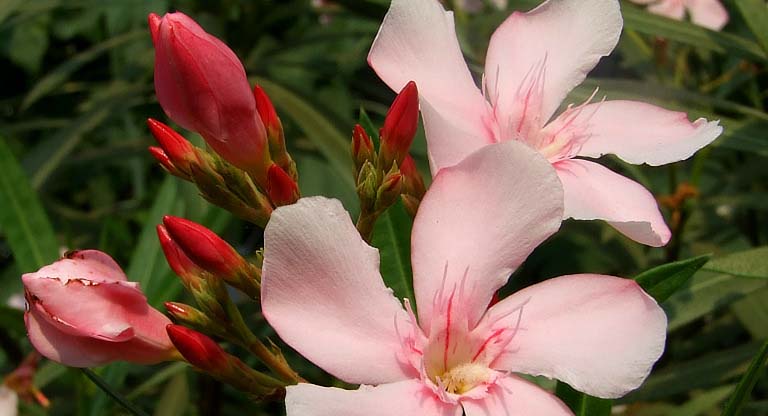It looks like you're using an Ad Blocker.
Please white-list or disable AboveTopSecret.com in your ad-blocking tool.
Thank you.
Some features of ATS will be disabled while you continue to use an ad-blocker.
18
share:
.The proposal by Sitchin in his book The 12th Planet that the
Annunaki had established a gold mining colony in Southern Africa is based upon his identification of that place as Arali, the source of Sumerian gold,
as ever he looked to establish this through distortion of texts and erroneous assumptions
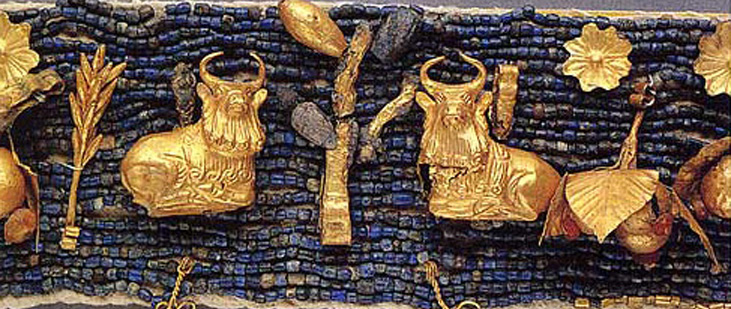
Curiously though he appears to have been oblivious to the best evidence for linking the digging and excavating activities of the Annunaki with the extraction of gold, that led to their mutiny and the creation of man to carry out the tasks, as in the Atra-hasis epic, as the source of Sumerian gold was Harali, from the Enki and Ninmah narrative;
This is very odd, because generally the digging seems to be in excavating the rivers and canals of Sumer to create infra-structure for that civilization, yet Harali was certainly outside of Sumer and it was the source of gold.

The gold of Harali arrived via the Land of Tukris, which is thought to be in North Western Iran in the region of the Zagros mountains, so either from there or beyond, but certainly not Southern Africa.
Sitchin appears to have followed on from earlier generations of scholars that saw no distinction in Harali, the geographic location of gold, and Arali which had association with the Underworld and thus the E-Kur mountain, and was suggested as a veritable mountain of gold, if taken as Harali, i don't think there is direct association but very interesting connections however, Sitchin does note;
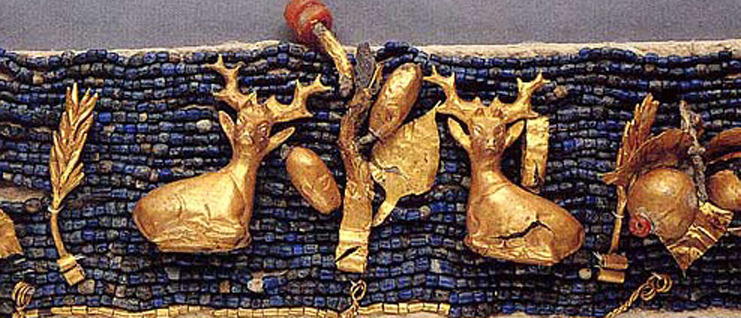
This is correct and at Bad-Tibira was established the Cult of Inanna and Dumuzid, were Inanna was patroness of gold crafting, from Harali;
But also in that Hymn to Inanna we find mention of Arali;
The desert of Arali was located between and to the West of Uruk and Bad-Tibira, it was the last resting place of the shepherd Kings that ruled as Dumuzid, it was also the last resting place of the gold of Harali, it's associations with the Underworld are through this.
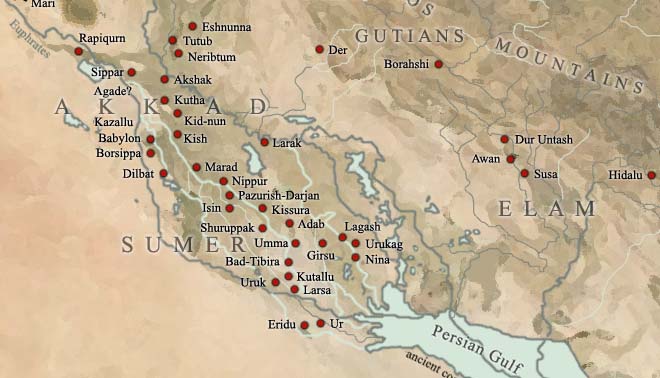
So Sitchin in relating Arali as the underworld in some way to South Africa was completely bonkers, it's geographic location is known, it was the Temple cult of Arali i was researching when i came across his take on things, as it was a very beautiful tradition;
There appears to have been a Temple out in the desert of Arali that was strewn with flowers and seen as the last resting place of Dumuzid;
Land of Arali was, as contrasted with the Upper World, or northern hemisphere, where Sumer was. Such a division of Earth's hemispheres between Enlil (northern) and Ea (southern) paralleled the designation of the northern skies as the Way of Enlil and the southern skies as the Way of Ea.
The texts indicate that Arali was situated west and south of Sumer. A ship traveling two to three thousand miles in a southwesterly direction from the Persian Gulf could have only one destination: the shores of southern Africa.

Curiously though he appears to have been oblivious to the best evidence for linking the digging and excavating activities of the Annunaki with the extraction of gold, that led to their mutiny and the creation of man to carry out the tasks, as in the Atra-hasis epic, as the source of Sumerian gold was Harali, from the Enki and Ninmah narrative;
In those days, in the days when heaven and earth were created; in those nights, in the nights when heaven and earth were created; in those years, in the years when the fates were determined; when the Anuna gods were born; when the goddesses were taken in marriage; when the goddesses were distributed in heaven and earth
The gods were digging the canals and piling up the silt in Ḫarali. The gods, crushing the clay, began complaining about this life.;
This is very odd, because generally the digging seems to be in excavating the rivers and canals of Sumer to create infra-structure for that civilization, yet Harali was certainly outside of Sumer and it was the source of gold.
Enlil and Sud
Ores from Harali, the faraway land, …… storehouses, ……, rock-crystal, gold, silver, ……, the yield of the uplands ……, heavy loads of them, were despatched by Enlil toward Ereš. After the personal presents, the transported goods ……, Ninmah and the minister ……. The dust from their march reached high into the sky like rain clouds.

The gold of Harali arrived via the Land of Tukris, which is thought to be in North Western Iran in the region of the Zagros mountains, so either from there or beyond, but certainly not Southern Africa.
Enki and Ninhursaga
“May the land of Tukriš hand over to you gold from Harali, lapis lazuli and ……. May the land of Meluha load precious desirable cornelian, meš wood of Magan and the best abba wood into large ships for you. May the land of Marhaši yield you precious stones, topazes. May the land of Magan offer you strong, powerful copper, dolerite, u stone and šumin stone. May the Sea-land offer you its own ebony wood, …… of a king. May the ‘Tent’-lands offer you fine multicoloured wools. May the land of Elam hand over to you choice wools, its tribute.
Sitchin appears to have followed on from earlier generations of scholars that saw no distinction in Harali, the geographic location of gold, and Arali which had association with the Underworld and thus the E-Kur mountain, and was suggested as a veritable mountain of gold, if taken as Harali, i don't think there is direct association but very interesting connections however, Sitchin does note;
There, the ores were taken to Bad-Tibira, whose name literally meant "the foundation of metalworking." Smelted and refined, the ores were cast into ingots whose shape remained unchanged throughout the ancient world for millennia.

This is correct and at Bad-Tibira was established the Cult of Inanna and Dumuzid, were Inanna was patroness of gold crafting, from Harali;
You are she who displays shining cornelian from the mountains to be admired. Bringing shining lapis lazuli from the bright mountain on special rafts, you are she who, like fire, melts gold from Harali. You are she who creates apples in their clusters.
But also in that Hymn to Inanna we find mention of Arali;
Dumuzid stands in beauty like an ildag tree. I will fill my heart with joy. The one who makes food plentiful ...... on the bright mound (?). My heart is filled with joy, ...... in heaven and earth. The house of Arali ...
The desert of Arali was located between and to the West of Uruk and Bad-Tibira, it was the last resting place of the shepherd Kings that ruled as Dumuzid, it was also the last resting place of the gold of Harali, it's associations with the Underworld are through this.

Mouming troops surround and trail his chariot as the procession makes its way out of the city of Ur to the desert between Uruk and Bad-tibira, that is, Arali.
The Mesopotamians had several names for the underworld including: Arali, ... “the land of no return,”
So Sitchin in relating Arali as the underworld in some way to South Africa was completely bonkers, it's geographic location is known, it was the Temple cult of Arali i was researching when i came across his take on things, as it was a very beautiful tradition;
She can make the lament for you, my Dumuzid, the lament for you, the lament, the lamentation, reach the desert -- she can make it reach the house Arali
In the desert, my Dumuzi, I sing with her the wail, the wail for you, the wail for you; In the temple Arali I sing with her
There appears to have been a Temple out in the desert of Arali that was strewn with flowers and seen as the last resting place of Dumuzid;
O house where lustrous herbs are strewn upon the flowery bed, the bed-chamber of holy Inana, where the lady of the plain refreshes herself! Brick-built E-muš is flowery and holy, its …… clay established for him who tends the ewes on the high plain.
Your house of Arali (House which is the nether world) gives shade to the shepherd. Your prince, a raging lion on the plain, the šuba jewel of the Mistress whose breast is holy and marvellous, the lord who is holy Inana’s husband, Dumuzid, the sovereign of E-muš, has erected a house in your precinct, O Bad-tibira, and taken his seat upon your dais.
Also what intrigued me is that just as the Annunaki were digging ditches in the region of Harali, it is into a ditch in the desert of Arali that
Dumuzid falls and is taken down into the Underworld. It was the greater association of gold as relating to a cult of immortality then that intrigued
me, the fabrication of the golden apples of Dumuzid at Bad-Tibrida, and also the possibility that the cult of the mourning Isis and Nephtys of Egypt
was adopted from the cult of Arali.
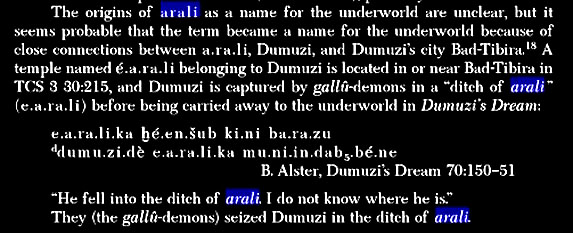
Also celebrated at Arali was the cult of Nin-Azimua, the wife of Ningishzida and hence the cult of the sacred tree in general;
Nin-azimua was one of eight children born from the relationship of Enki with the Goddess Uttu, that related to a sacred celestial tree extending upward from the Field constellation toward Canis Major, thus Nin-Azimua could relate to the blazing heat of the desert as did the star Sirius.
It is in the text of the Death of Ur-Namma. were he is led out into the desert of Arali in procession and offerings made to Ningishzidra and Nin-Azumia as Deities relating to that Underworld place;

It can be seen that her cultic offerings related to surveying and measuring, that she had association with horizontal axis of the tree of life in the sense of arms, and it was such things that made me consider the relationship of the cult of Isis and Nephtys and the tree cult of Osiris, but alL underworld Deities were represented at Arali it should be pointed out.
The flowers that were strewn in the House Arali were quite possibly the Arali flower itself, or Nerium Oleander, such five petaled flowers are often seen represented with regards to the cult of Inanna, and the plant has retained a sacred role in Dravidian culture;
Obviously then after carrying out this research into the desert Arali being the last resting place of the Royal Dynasties having association with the cult of Inanna and Dumuzid it was clear that Sitchin's identification of South Africa as Arali was totally ridiculous, but that nontheless the earlier research he had based it upon which suggested Harali and Arali were one and the same place, whilst incorrect, did make interesting association.
As far as i know neither the Temple E-Arali nor the last resting place of the Dynastic rulers buried there has been located, it is known who built the E-Mus Temple of Arali;
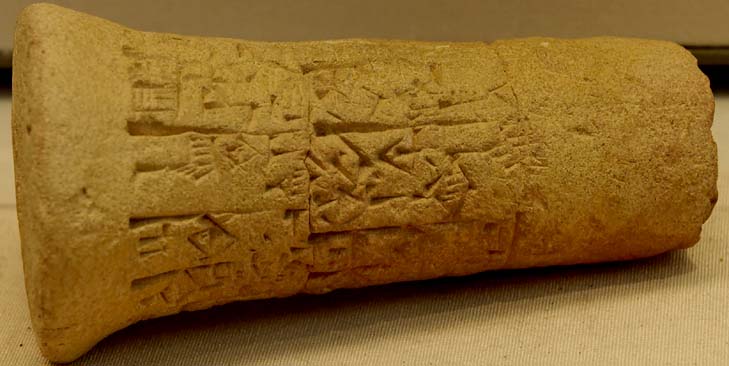
For Inanna and Lugal-emuš, En-metena, ruler of Lagaš, the E-muš, their beloved temple, built and ordered (these) clay nails for them.
At that time, En-metena,ruler of Lagaš, and Lugal-kineš-dudu, ruler of Uruk established brotherhood
More properly Lugal-emuš relates to the Dynastic (Lugal) line of the e-Mus, the Lion Kings that ruled as shepherds of the people, that were seen as a Suba stone or diamond upon the breast of Inanna, the Lion Queen that had seven pulling her chariot in her cultic statue of Uruk, and born of Nin-sumun.

Also celebrated at Arali was the cult of Nin-Azimua, the wife of Ningishzida and hence the cult of the sacred tree in general;
Ninazimua was a little known Sumerian goddess from the Arali Desert. Her name means 'Lady who makes the tree branches grow straight.' She was noted for her scribal skills. She became the wife of Ningishzida... Ninazimua (Lady Flawlessly Grown Branch).
Nin-azimua was one of eight children born from the relationship of Enki with the Goddess Uttu, that related to a sacred celestial tree extending upward from the Field constellation toward Canis Major, thus Nin-Azimua could relate to the blazing heat of the desert as did the star Sirius.
’My brother (Enki), what part of you hurts you?’
‘My arm hurts me.’
She (Ninhursag) gave birth to Azimua out of it…”
It is in the text of the Death of Ur-Namma. were he is led out into the desert of Arali in procession and offerings made to Ningishzidra and Nin-Azumia as Deities relating to that Underworld place;
To the valiant warrior Ninjiczida, in his palace, the shepherd Ur-Namma offered a chariot with ...... wheels sparkling with gold, ...... donkeys, thoroughbreds, ...... donkeys with dappled thighs, ......, followed ...... by a shepherd and a herdsman.
To his spouse, Ninazimua, the august scribe, denizen of Arali, in her palace, the shepherd Ur-Namma offered a headdress with the august ear-pieces (?) of a sage, made of alabaster, a ...... stylus, the hallmark of the scribe, a surveyor's gleaming line, and the measuring rod ...

It can be seen that her cultic offerings related to surveying and measuring, that she had association with horizontal axis of the tree of life in the sense of arms, and it was such things that made me consider the relationship of the cult of Isis and Nephtys and the tree cult of Osiris, but alL underworld Deities were represented at Arali it should be pointed out.
The flowers that were strewn in the House Arali were quite possibly the Arali flower itself, or Nerium Oleander, such five petaled flowers are often seen represented with regards to the cult of Inanna, and the plant has retained a sacred role in Dravidian culture;
This flowers is considered auspicious in the Hindu rituals in South India. Though this garland is given as a part of Archana for all Gods, there is one unique speciality of this flower in Tamil Nadu, India. The prospective brides offer the Nerium Oleander garland to the Goddess Durga during the Raagu Kalam
Obviously then after carrying out this research into the desert Arali being the last resting place of the Royal Dynasties having association with the cult of Inanna and Dumuzid it was clear that Sitchin's identification of South Africa as Arali was totally ridiculous, but that nontheless the earlier research he had based it upon which suggested Harali and Arali were one and the same place, whilst incorrect, did make interesting association.
As far as i know neither the Temple E-Arali nor the last resting place of the Dynastic rulers buried there has been located, it is known who built the E-Mus Temple of Arali;

For Inanna and Lugal-emuš, En-metena, ruler of Lagaš, the E-muš, their beloved temple, built and ordered (these) clay nails for them.
At that time, En-metena,ruler of Lagaš, and Lugal-kineš-dudu, ruler of Uruk established brotherhood
This clay nail or cone inscription is well-known from other examples and commemorates the building of the E-muš temple of Dumuzi
Frayne interprets muš3 as “radiance” translating the full name of the temple as “House – Radiance of the Land,”
More properly Lugal-emuš relates to the Dynastic (Lugal) line of the e-Mus, the Lion Kings that ruled as shepherds of the people, that were seen as a Suba stone or diamond upon the breast of Inanna, the Lion Queen that had seven pulling her chariot in her cultic statue of Uruk, and born of Nin-sumun.
Ur-Namma, the son of Ninsumun, was brought to Arali, the pre-eminent place of the Land, in his prime. The soldiers accompanying the king shed tears: their boat was sunk in a land as foreign to them as Dilmun. …… was cut. It was stripped of the oars, punting poles and rudder which it had. ……; its bolt was broken off. …… was put aside; it stood (?) in saltpetre. His donkeys were to be found with the king; they were buried with him. The journey to the nether world is a desolate route.
edit on Kam930257vAmerica/ChicagoMonday1530 by Kantzveldt because: (no reason given)
Sumerians did have several sources for gold, with most from the Iranian plateau which even later Greek scholars (Diodorus Siculs, Strabo, Pliny,
Periplus) had written about as a source for gold, although no traces of such are now left. Access to gold also came from the Harappan (modern
Pakistan, Afghanistan), Dilmun (modern eastern Arabia), from sources in Turkey and later in their history, Egypt. There ability to trade with
neighboring cultures is one of the tenets that gave rise to their civilization. Maybe it was the lack of precious minerals and metals in their land
that drove their need to develop such trade.
To add it would seem logical that if genetic programs were required to produce intelligent new land based workers to survey and mine above land and
the neither realms (caves or underground mines) that to mine the seas there would of been further genetic programs to survey and recover precious
minerals from oceans (caves or undersea mines) with more sea based intelligent workers...
Are those workers still around as are the land based is another conspiracy of its own.
These images come to mind
Interesting thread Kantzveldt something for the mind to ponder
NAMASTE*******
Are those workers still around as are the land based is another conspiracy of its own.
These images come to mind

Interesting thread Kantzveldt something for the mind to ponder
NAMASTE*******
a reply to: Blackmarketeer
Yes it's unclear whether the gold of Harali came from the Tukris region of NW Iran or beyond, it's inhabitants are considered to have been Indo-European so perhaps it was arriving into the region from elsewhere, but it surprised me that the Igigi were understood as digging at Harali as it was outside of Sumer, i suppose in the sense of sourcing a supply of wealth for the civilization they were establishing the foundations for...?
Sitchin perhaps had something of a point then that they were digging for gold as every other mention of Harali is in connection to that place as a source of gold, hilarious though that he conflates the Underworld associations of the Dynastic burial site of Arali with Harali and determines that underworld equates with bottom of world as in South Africa
But he wasn't the only one to confuse the two.
a reply to: Ophiuchus 13
The creation of humanity as an after thought to carry out the digging in preparing the land for civilization was an odd way of looking at things, probably seeing things in terms of the Gods determining they would settle the land of Sumer within multiple cities and shrines and that everything then followed on from this higher decision, at some point people being seen as useful in this enterprise, normally we see things the other way around.
Yes it's unclear whether the gold of Harali came from the Tukris region of NW Iran or beyond, it's inhabitants are considered to have been Indo-European so perhaps it was arriving into the region from elsewhere, but it surprised me that the Igigi were understood as digging at Harali as it was outside of Sumer, i suppose in the sense of sourcing a supply of wealth for the civilization they were establishing the foundations for...?
Sitchin perhaps had something of a point then that they were digging for gold as every other mention of Harali is in connection to that place as a source of gold, hilarious though that he conflates the Underworld associations of the Dynastic burial site of Arali with Harali and determines that underworld equates with bottom of world as in South Africa
The various names and epithets for Ea’s African Land of Mines are replete with clues to its location and nature. It was known as A.RA.LI (‘place of the shining lodes’), the land from which the metal ores come. A text listing the mountains and rivers of the Sumerian world states: ‘Mount Arali - home of the gold’; and a fragmented text confirms that Arali was the land on which Bad-Tibira depended for its continued operations.
But he wasn't the only one to confuse the two.
a reply to: Ophiuchus 13
The creation of humanity as an after thought to carry out the digging in preparing the land for civilization was an odd way of looking at things, probably seeing things in terms of the Gods determining they would settle the land of Sumer within multiple cities and shrines and that everything then followed on from this higher decision, at some point people being seen as useful in this enterprise, normally we see things the other way around.
edit on Kam930257vAmerica/ChicagoMonday1530 by Kantzveldt because: (no reason given)
a reply to: Kantzveldt
I read Stitchin many years ago and found the works fascinating.
Then, little by little, I began to learn what a crock it all was.
No offense, but Stitchin is a fraud. He sold books...if you regard them as fiction and enjoy them, then great!
I read Stitchin many years ago and found the works fascinating.
Then, little by little, I began to learn what a crock it all was.
No offense, but Stitchin is a fraud. He sold books...if you regard them as fiction and enjoy them, then great!
Sitchin's stuff is heavily flawed, but it is because of him that we are even discussing these texts and perhaps uncovering clues to human history and
buried meanings in them.
a reply to: bbracken677
Yes he sort of presented the Anunnaki mythos as an Alien soap opera with the promise that they'd be back to make new series and needed to liberally re-interpret in order to create that vaudeville vision for the masses, correct interpretation seems only ever to be for the few, which is something of a shame, so often i sort of 'use' Sitchin.
Yes he sort of presented the Anunnaki mythos as an Alien soap opera with the promise that they'd be back to make new series and needed to liberally re-interpret in order to create that vaudeville vision for the masses, correct interpretation seems only ever to be for the few, which is something of a shame, so often i sort of 'use' Sitchin.
Very well worked and presented K.
edit on 16/9/14 by Hanslune because: (no reason given)
a reply to: Hanslune
Thanks, i was researching the E-Arali cult when i came across Sitchins mad suggestions that it was South Africa, my interest was the comparative between Isis and Nephtys and Inanna and Nin-Azimua as funerary Goddess' of the sacred tree cult, and also the birthing of a new ruler in terms of the Dynastic succession, which is found at Bad-Tibira in the cult of Lulal, though that city has been little excavated;
There are better ways to popularize this than those of Sitchin...
Thanks, i was researching the E-Arali cult when i came across Sitchins mad suggestions that it was South Africa, my interest was the comparative between Isis and Nephtys and Inanna and Nin-Azimua as funerary Goddess' of the sacred tree cult, and also the birthing of a new ruler in terms of the Dynastic succession, which is found at Bad-Tibira in the cult of Lulal, though that city has been little excavated;
In ancient times, Bad-tibira was a city situated at the edge of marshlands. This was important, for it was known mostly for it’s reed-burning furnaces and smelteries. Raw ore was brought via the Euphrates and Iturungal Canal to the kilns. Mostly copper, but also gold and silver, were exported from Bad-tibira to artisan shops all over ancient Sumer. These urban centers included: Uruk, Ur, Umma and Adab.
Bad-tibira was also a cult-center for the god Lulal, the son of Inanna. Although Dumuzi was named as king of Badtibira, Lulal remained as the tutelary deity of the city.
There are better ways to popularize this than those of Sitchin...
Your house of Arali (House which is the nether world) gives shade to the shepherd. Your prince, a raging lion on the plain, the šuba jewel of the Mistress whose breast is holy and marvellous, the lord who is holy Inana’s husband, Dumuzid, the sovereign of E-muš, has erected a house in your precinct, O Bad-tibira, and taken his seat upon your dais.
new topics
-
whistleblower Captain Bill Uhouse on the Kingman UFO recovery
Aliens and UFOs: 4 hours ago -
1980s Arcade
General Chit Chat: 6 hours ago -
Deadpool and Wolverine
Movies: 7 hours ago -
Teenager makes chess history becoming the youngest challenger for the world championship crown
Other Current Events: 8 hours ago -
CIA botched its handling of sexual assault allegations, House intel report says
Breaking Alternative News: 9 hours ago -
Lawsuit Seeks to ‘Ban the Jab’ in Florida
Diseases and Pandemics: 11 hours ago
top topics
-
Lawsuit Seeks to ‘Ban the Jab’ in Florida
Diseases and Pandemics: 11 hours ago, 20 flags -
Starburst galaxy M82 - Webb Vs Hubble
Space Exploration: 13 hours ago, 13 flags -
The Superstition of Full Moons Filling Hospitals Turns Out To Be True!
Medical Issues & Conspiracies: 15 hours ago, 8 flags -
CIA botched its handling of sexual assault allegations, House intel report says
Breaking Alternative News: 9 hours ago, 8 flags -
15 Unhealthiest Sodas On The Market
Health & Wellness: 14 hours ago, 6 flags -
whistleblower Captain Bill Uhouse on the Kingman UFO recovery
Aliens and UFOs: 4 hours ago, 6 flags -
Teenager makes chess history becoming the youngest challenger for the world championship crown
Other Current Events: 8 hours ago, 3 flags -
Deadpool and Wolverine
Movies: 7 hours ago, 3 flags -
1980s Arcade
General Chit Chat: 6 hours ago, 3 flags
active topics
-
1980s Arcade
General Chit Chat • 8 • : F2d5thCavv2 -
What is a dream
The Gray Area • 27 • : wrayth -
Europe declares war on Russia?
World War Three • 61 • : F2d5thCavv2 -
The Acronym Game .. Pt.3
General Chit Chat • 7741 • : F2d5thCavv2 -
Russia Ukraine Update Thread - part 3
World War Three • 5713 • : F2d5thCavv2 -
IDF Intel Chief Resigns Over Hamas attack
Middle East Issues • 32 • : Terpene -
15 Unhealthiest Sodas On The Market
Health & Wellness • 32 • : VariedcodeSole -
Fast Moving Disc Shaped UFO Captured on Camera During Flight from Florida to New York City
Aliens and UFOs • 18 • : inflaymes69 -
Definitive 9.11 Pentagon EVIDENCE.
9/11 Conspiracies • 419 • : SchrodingersRat -
They Killed Dr. Who for Good
Rant • 61 • : Cymru
18

